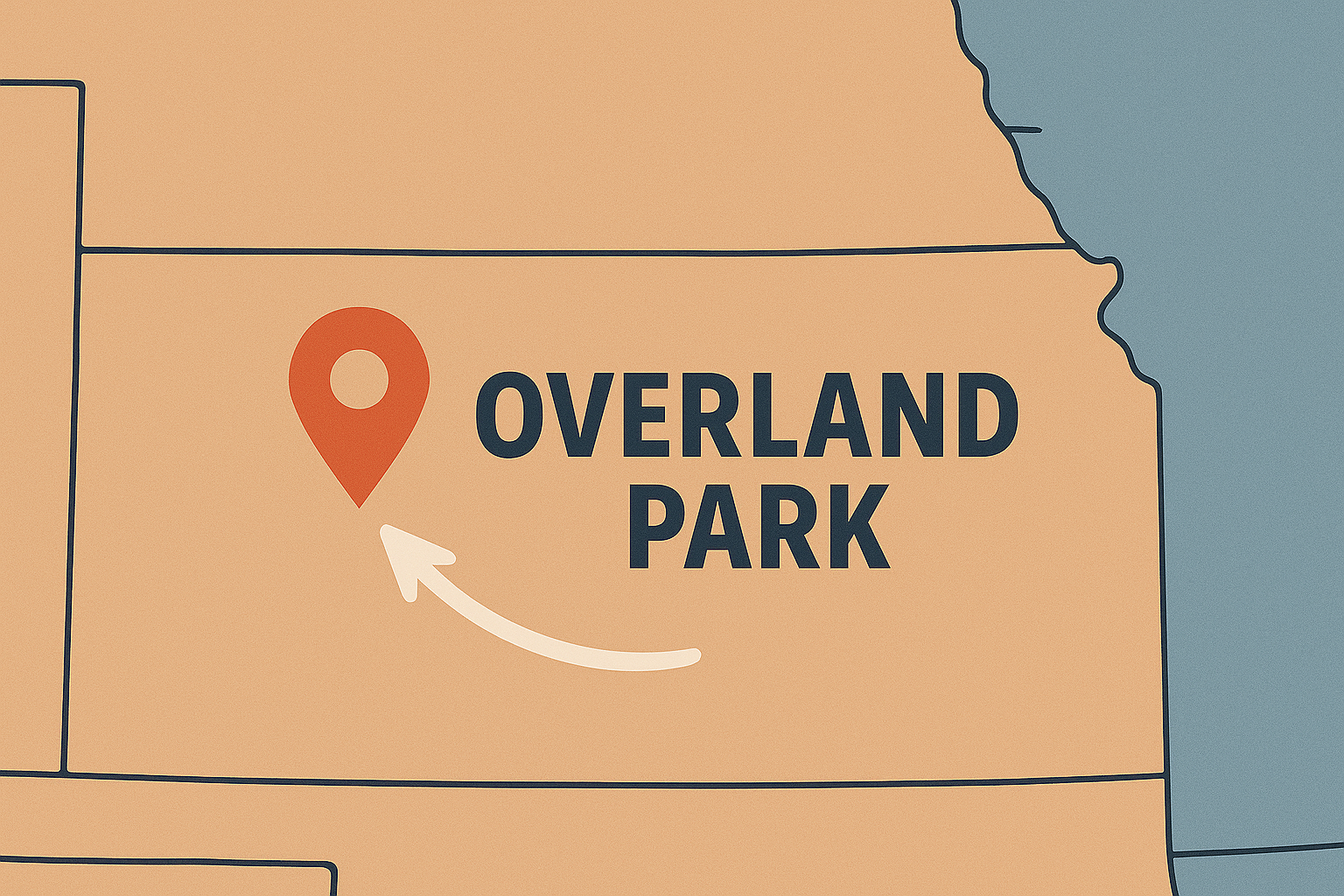Are you in Overland Park and wondering whether DBT vs CBT is the better approach to support your mental health and personal growth?
The demands of professional life in Overland Park, whether in business, law, healthcare, or tech, are significant. High-achieving individuals often navigate immense stress, burnout, perfectionism, and emotional overwhelm. As the need for accessible mental health support grows, virtual care has become a vital resource. Two of the most effective, evidence-based therapeutic modalities available are Cognitive Behavioral Therapy (CBT) and Dialectical Behavior Therapy (DBT).
Both are powerful forms of behavioral therapy designed to help manage emotional distress, challenge negative thought patterns, and change maladaptive behaviors. However, they operate differently and are suited for distinct challenges. Understanding the difference between DBT and CBT empowers you to choose the therapeutic approach best suited to your goals and mental health needs, paving the way for profound personal growth and professional balance.

Photo by Caleb Bennetts on Unsplash
Understanding Cognitive Behavioral Therapy (CBT)
Cognitive Behavioral Therapy (CBT) is a structured, problem-focused form of talk therapy grounded in the principles of cognitive psychology. Its core premise is that our thoughts, feelings, and behaviors are interconnected. CBT operates on the idea that by changing our thinking patterns, we can change our emotional responses and actions.
The primary goal of CBT is to identify, challenge, and reframe cognitive distortions—the ingrained negative thoughts that unconsciously influence our behaviors and emotions. For example, a professional who makes a minor mistake at work might have an automatic thought like, “I’m a failure, and I’m going to get fired.” A CBT therapist helps the client recognize this as a cognitive distortion (like catastrophizing) and guides them to develop a more balanced, realistic perspective.
Ready to Start Therapy?
Your healing journey can begin today. Fill out the form below to connect with a therapist who truly listens and understands.
Applications and Techniques of Cognitive Behavior Therapy (CBT)
Clinical trials have consistently shown CBT to be beneficial for a wide range of mental health conditions. It is often considered a first-line treatment for:
- Anxiety disorders, including generalized anxiety disorder, social anxiety, and panic disorder.
- Depression and mood disorders.
- Obsessive-compulsive disorder (OCD).
- Post-traumatic stress disorder (PTSD).
To achieve these outcomes, CBT therapists use several core techniques:
- Identifying Automatic Thoughts: Learning to recognize the spontaneous negative thoughts that pop into your head in response to a situation.
- Behavioral Activation: Encouraging engagement in positive and rewarding activities to counteract avoidance and improve mood, particularly in treating depression.
- Exposure and Response Prevention: Gradually facing feared objects or situations in a safe environment to reduce anxiety and break the cycle of avoidance.
- Problem-Solving and Coping Skills Development: Building practical skills to manage stressful situations and develop healthier coping strategies.
CBT provides a structured roadmap to help individuals become their own therapists by equipping them with the tools to manage their thoughts and behaviors long-term.
Understanding Dialectical Behavioral Therapy (DBT)
Dialectical Behavior Therapy (DBT) is a specialized form of cognitive behavioral treatment originally developed by Dr. Marsha Linehan to treat borderline personality disorder (BPD). It is designed to help individuals who experience intense emotions and struggle with problematic behaviors like self-harm or chronic suicidal ideation.
The term “dialectical” refers to the core philosophy of the therapy: balancing acceptance and change. DBT teaches that it’s possible to accept yourself as you are in this moment while also committing to changing your behaviors to build a life worth living. This non-judgmental stance is crucial for individuals who often feel invalidated or misunderstood. DBT focuses on providing practical, real-life skill development to help clients choose healthy behaviors, even during moments of extreme emotional distress.
The Four Modules of Dialectical Behavior Therapy (DBT) Coping Skills
DBT is built on four key skill modules, which are taught in both individual therapy and group sessions:
- Mindfulness Skills: This is the foundation of DBT. It teaches how to be fully present in the moment, observing thoughts and feelings without judgment, rather than being controlled by them.
- Distress Tolerance: These are crisis-survival skills. Distress tolerance teaches how to navigate intense emotional pain without resorting to self-destructive behaviors. Techniques include self-soothing and radical acceptance.
- Emotion Regulation: This module helps you understand and manage your emotional responses. You learn to identify your emotions, reduce emotional vulnerability, and change unwanted emotional reactions over time.
- Interpersonal Effectiveness: These skills focus on building and maintaining healthy relationships. You learn how to assert your needs, say no, and manage conflict effectively while preserving self-respect and the respect of others.
DBT has proven effective for a range of complex mental health challenges, including:
- Borderline personality disorder (BPD)
- Substance use disorders
- Eating disorders
- Bipolar disorder
- Chronic suicidal ideation or self-harm
DBT vs CBT: Understanding the Key Differences
While DBT is a type of CBT, its focus, structure, and approach have key differences. Understanding them can help you determine which therapy is right for you.
|
Feature |
Cognitive Behavioral Therapy (CBT) |
Dialectical Behavior Therapy (DBT) |
|---|---|---|
|
Core Focus |
Targets thoughts to influence behaviors and emotions. |
Targets emotions and combines acceptance with behavior change. |
|
Structure |
Often shorter-term and primarily involves individual therapy sessions. |
A more intensive, comprehensive program including individual therapy, group skills training, and phone coaching. |
|
Population |
Broadly effective for many mental health disorders like anxiety and depression. |
Specialized for severe emotional dysregulation, BPD, self-harm, and chronic suicidal thoughts. |
|
Approach |
Emphasizes cognitive restructuring and challenging negative thought patterns. |
Integrates mindfulness and acceptance-based strategies alongside change-oriented techniques. |
Common Questions About CBT vs DBT
Who is DBT not recommended for?
DBT requires a significant time commitment and a high level of motivation. The comprehensive structure, including weekly individual and group sessions, can be demanding. Clients who are not in immediate crisis, prefer a less emotionally-focused approach, or are seeking a shorter-term solution may find that CBT is a more approachable starting point.
Is DBT or CBT better for ADHD?
Emerging clinical trials suggest that CBT is often the first-line psychosocial approach for ADHD in adults. CBT can help with the organizational and time-management challenges that often accompany ADHD. However, many individuals with ADHD also experience significant emotional dysregulation. In these cases, DBT skills—especially distress tolerance and emotion regulation—can be a powerful complement to traditional ADHD treatment.
Why is DBT criticized?
The main critiques of DBT center on its intensity and the commitment it requires. The need for both individual and group therapy can be a barrier for some due to time and cost. However, it’s important to note that research data consistently show significant improvements and life-saving outcomes for clients who fully engage in the program.
How Virtual DBT Therapy Supports Busy Professionals
For busy professionals in Overland Park, balancing a demanding career with the need for mental wellness can feel impossible. Virtual therapy sessions make developing behavioral therapy skills more accessible than ever. Online platforms offer the flexibility and privacy needed to make consistent progress without sacrificing professional commitments.
Virtual DBT, when delivered by a qualified mental health professional, maintains fidelity to the evidence-based practices that make it so effective. It offers distinct advantages for professionals:
- Access to Specialized Care: Find a highly qualified DBT therapist without being limited by geography. Groundbreaker Therapy, for instance, serves clients across 43 states.
- Flexible Scheduling: Fit therapy sessions into your demanding schedule, eliminating travel time and making it easier to prioritize your mental health.
- Increased Confidentiality: For those in small or interconnected professional communities, virtual therapy provides an added layer of privacy and discretion.
Choosing luxury-level, private-pay care offers a tailored, individualized experience. It allows for a deep therapeutic connection, intensive and focused sessions, and the rapid development of coping strategies and emotional resilience necessary to thrive in high-pressure environments.
CBT and DBT — A Combined Approach for Long-Term Growth
The choice between CBT and DBT is not always either/or. For individuals with complex or overlapping mental health challenges—such as PTSD combined with a mood disorder, or anxiety with traits of emotional dysregulation—a skilled therapist can integrate techniques from both modalities.
This blended approach creates a holistic and powerful therapeutic process. For example, a client might use CBT techniques to restructure anxious thoughts about work performance while simultaneously using DBT mindfulness and distress tolerance skills to manage the intense emotional overwhelm that follows a perceived failure.
Other related modalities, like Acceptance and Commitment Therapy (ACT), also bridge cognitive and mindfulness-based approaches. ACT, a form of commitment therapy, helps individuals accept their thoughts and feelings while committing to actions aligned with their personal values. Combining these powerful therapies enhances self-awareness, deepens emotional regulation, and fosters lasting behavioral change.

Photo by Frans van Heerden on Pexels
Experience Compassionate, Evidence-Based Care
At Groundbreaker Therapy, I have years of experience working with highly sensitive, intelligent professionals across 43 states. My mission is to provide compassionate, evidence-based care that fosters clarity, confidence, and emotional resilience. I am deeply committed to clinical excellence and helping clients navigate complex mental health issues to achieve meaningful results in their lives.
Your journey toward mental wellness and professional balance is unique. Whether you feel that the structured, thought-focused approach of CBT or the emotion-centered, skills-based framework of DBT is right for you, taking the first step is what matters most.
Ready to explore how therapy can support you? Schedule a virtual consultation today to discover a path toward greater emotional strength and a more fulfilling life.
Resources & References
- National Institute of Mental Health (NIMH)
- American Psychological Association – CBT Overview
- Behavioral Tech – DBT Resources
- National Center for Biotechnology Information – DBT vs. CBT Clinical Trials
- Simply Psychology – CBT vs. DBT
- Psychology Today – Dialectical Behavior Therapy Overview





